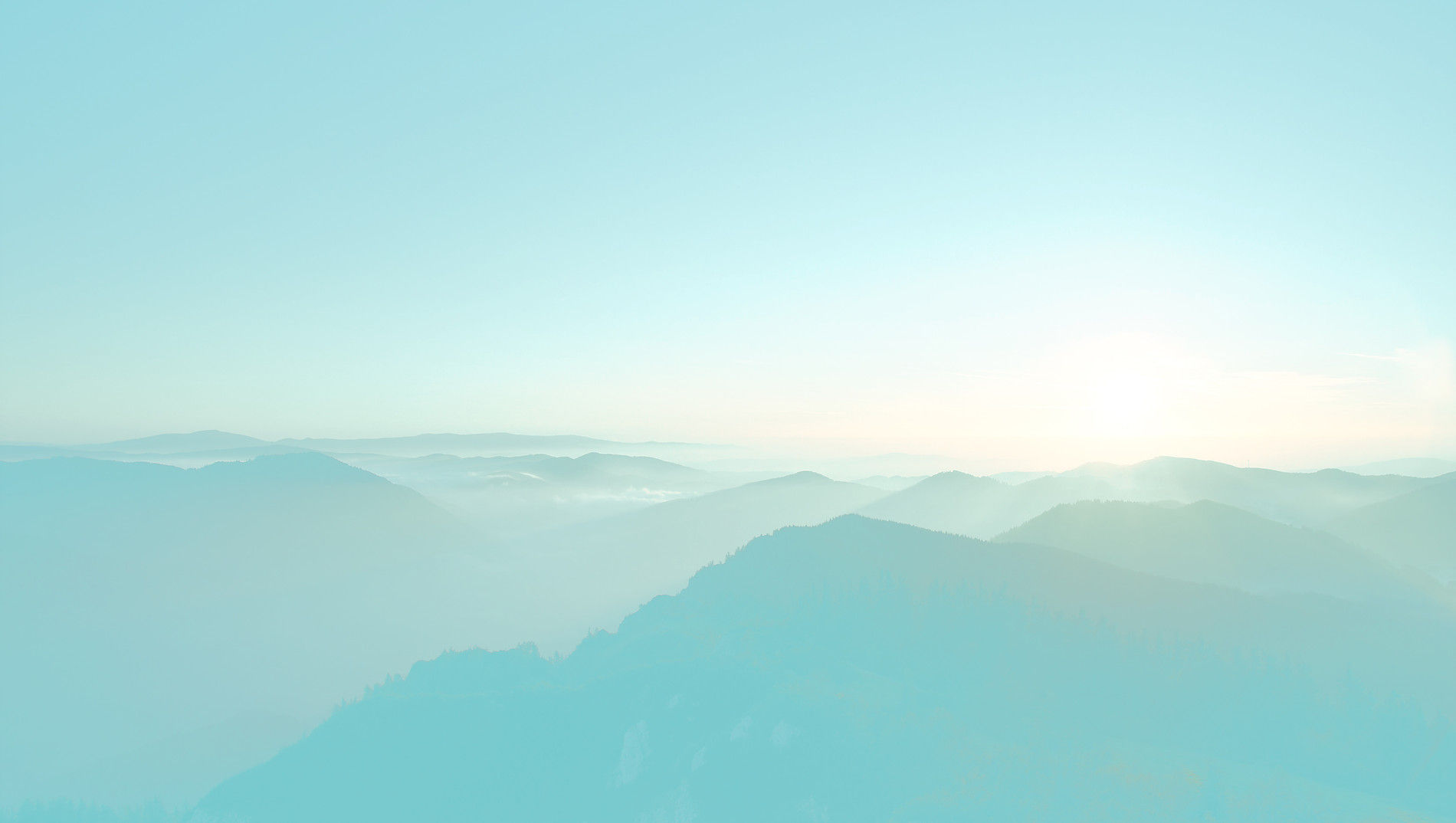
by María Pétursdóttir

Internship / assistant artist
in production of the art project Temple of Alternative Histories (TAH) in Staatstheater, Kassel, Germany may 01 - september 25 2022

In the spring after my first year of NAIP, I went to Germany as an intern and took part in a major project at the Staatstheater Kassel, a musical theater in the city of Kassel. The project, titled Temple of Alternative Histories, was a collaboration between visual artist Anna Rún Tryggvadóttir and director Þorleifur Örn Arnarsson, blending visual art and opera
Unnur Sesselía Ólafsdóttir, another Icelandic intern and actress, and I were eventually listed as assistant artists in the theater's catalog, as our contributions grew far beyond what had
originally been planned. Alongside us were five other interns involved in various capacities. Over the five-month program, I primarily worked as an assistant artist in the visual arts section During this time, the influential art festival Documenta was also taking place in Kassel, leaving its mark on the city and inevitably influencing our work and approach to the project. The vibrant atmosphere seeped into our daily practice—performances in the main square became part of our routine, almost like daily bread.
 |  |  |  |  |  |
|---|---|---|---|---|---|
 |
It amused me somewhat to find that I was the only member of the Icelandic group with the necessary skills to operate large chainsaws in the theater's carpentry workshop. To validate my experience, I had to present a certified document from the Technical College in Reykjavík, where I had studied woodworking. This certification ultimately led to my role as the master builder for the artworks, which consisted of movable sculptures—large plywood bowls or barrels upholstered with carpet.The bowls incorporated a variety of building materials sourced directly from within the theater itself: the same sand used in the glass windows, copper mined from the same source as the theater’s roof, marble from the floors, and stone from the walls. Additionally, a large oak log from nature was set spinning on the exhibition floor, housing a living anthill—a reference to the oak floorboards and other interior features of the building.
From time to time, we were able to observe the opera rehearsals—the singing sessions, the dancers' progress, and the evolving costume designs.On the first floor of the theater, we installed three video works on screens that were part of the main exhibition— In the same space, we also initiated a piece by the Swedish artists Lundahl & Seitl. This was an interactive performance led by us interns.
Audience members signed up for this performance in pairs. On arrival, they were given headphones with MP3 players, and one person in each pair was blindfolded. The soundscape delivered through the headphones provided both immersive audio instructions and poetic narration, guiding participants through a journey where one embodied stone, the other water, and together they were to create a river. One person led their blindfolded partner through the space, and then the roles reversed. Typically, three pairs participated at the same time, requiring us guides to attend to all six people simultaneously.Christer Lundahl and Martina Seitl are remarkable artists, and witnessing how they craft soundscapes and engage audiences left a deep impression on me. It was also inspiring to get to know them personally. As they write in their book New Originals: “We want to change the way museums and theatres are used. Our works play on the traditions and rituals of these institutions.”[1]There was high demand for this performance throughout the summer, coinciding with the city-wide opening of the Documenta exhibition in Kassel.[1] Lundahl & Seitl, New Originals: An Overview of Works from 2007-2016 (Kunstmuseum Bonn: Wienand, 2017), 75.
The theater was located right next to the Documenta Palace, and I was fortunate to receive a press pass for the festival. This allowed me to visit the exhibition spaces across the city repeatedly throughout the summer, often during shift breaks. I frequently stopped by the Ruru House, which served as a ticket and bookshop for the festival, as well as a coffee house and community hub that hosted daily performances and happenings.My first task upon arriving in Germany was to organize the shift schedule for the five interns, coordinating shifts based on everyone’s availability and needs. In addition, Unnur Sesselía and I took on responsibilities for exhibition management. This included writing texts for handouts related to the artworks, events, and participating artists, as well as creating content for the project's website and social media channels.The exhibition was organized in collaboration with the University of Kassel’s Faculty of Science. This partnership brought regular events to the venue, where both artists and scientists came together to give lectures, screen videos, and perform.
I was responsible for overseeing technical aspects—making sure the audio and video systems were correctly set up and recording each event. Among the featured works was an installation by Anna Rún Tryggvadóttir, which used MP3 players to deliver a beautifully written, reflective narration by the artist herself. This text wove together the history and identity of the house while also addressing larger themes around Earth’s resources and climate change.Anna Rún’s work in the theater can be described as a kind of identity exploration. The identity of the building—its materials and interior—was turned inside out, opened up, and dissected both verbally and visually, through displays and discussions from multiple angles.My time in Germany was particularly meaningful, as I am an activist involved in politics and in movements supporting refugees, peace activists, advocates for a new constitution, and activists for the rights of people with disabilities.
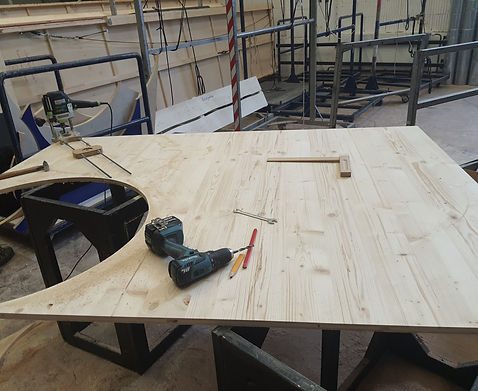
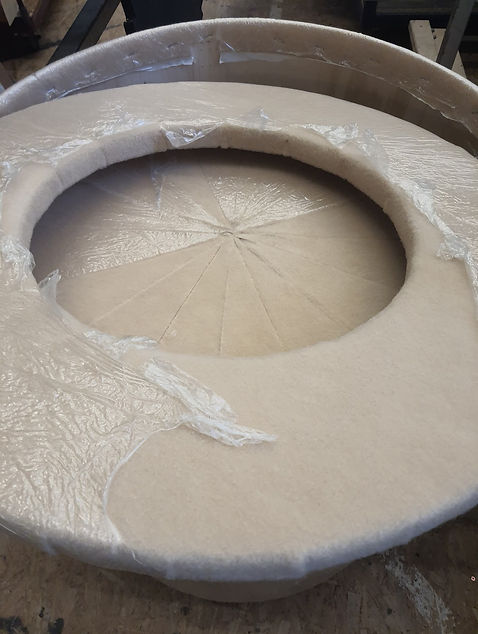


 |  |  |
|---|---|---|
 |  |
The theater was located right next to the Documenta Palace, and I was fortunate to receive a press pass for the festival. This allowed me to visit the exhibition spaces across the city repeatedly throughout the summer, often during shift breaks. I frequently stopped by the Ruru House, which served as a ticket and bookshop for the festival, as well as a coffee house and community hub that hosted daily performances and happenings.My first task upon arriving in Germany was to organize the shift schedule for the five interns, coordinating shifts based on everyone’s availability and needs. In addition, Unnur Sesselía and I took on responsibilities for exhibition management. This included writing texts for handouts related to the artworks, events, and participating artists, as well as creating content for the project's website and social media channels.The exhibition was organized in collaboration with the University of Kassel’s Faculty of Science. This partnership brought regular events to the venue, where both artists and scientists came together to give lectures, screen videos, and perform.
 |  |  |  |  |  |
|---|---|---|---|---|---|
 |  |  |
It was particularly useful to get insights into some of the interdisciplinary works set up in the theater that summer. It was also very interesting to get to know the interactive parts for example in the Lundal & Seitle art work which really stood out for me afterwards.
This summer became very insightful for me on many levels and in the end of the season I had spoken to thousands of visitors, set up my own events such as “Speed Friending on Art” with Unnur Sesselja Ólafsdóttir (an Icelandic actress whom was my main colleague in the project) and premiered the video/audio work “Pressing matters” where I sat and answered questions afterwards.
Pressing matters came from the idea of the earth having life signals like “blood pressure” and “breathing”. All summer I was taking the hypothetical blood pressure of the city Kassel while walking it's streets and listening to its sounds in times of heatwaves and global warming. I recorded the streets every day and sounds of environment and street artists music. That was my raw material for the video work which was then threaded together with text, special effects and tricks.
The art festival in Kassel that summer Documenta X, was very insperational to me but that exhibition witch spreaded around the town is held every 5 years in Kassel and has been since the year 1955. That first time with artistic director Arnold Bode. It was considered the the largest and most extensive event or exhibition of modern art in West Germany since the end of the Second World War. Amongst the artists exhibited that year were Giagomo Balla, Georges Braque,Marc Chagall, Max Ernst, Wassily Kandinsky,Henri Matisse, Pablo Picasso, Oskar Schlemmer, Kurt Schwitters, Sophie Taeuber-Arp,Marie Héléne Vieira da Silva,Emy Roeder, Emil Nolde, Paul Klee and many more.
This last Documenta was different in the way that the curators were an artist group from Indonesia called Ruangrupa and all the artist they invited to exhibit were collectives from Asia, Afrika, Australia and Cuba. This was a huge exhibition and gathering of artists/activists discussing the biggest problems of the earth now a day´s such as climat changes, colonalisme and violence toward abboriginals, food and cloth waste, polution and discrimination toward minority groups such as trans people. In every lunch brake and every day off I could go to an exhibition or a consert related to Documenta X.

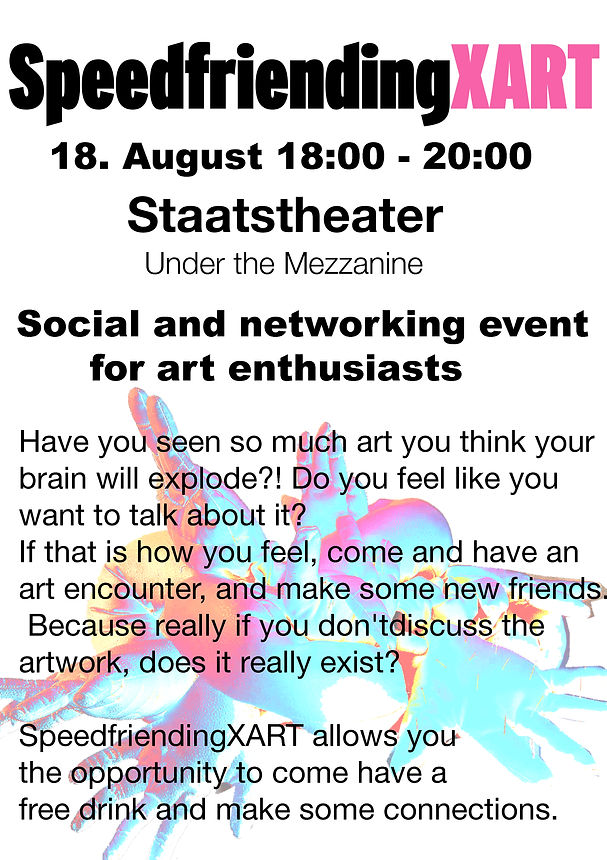
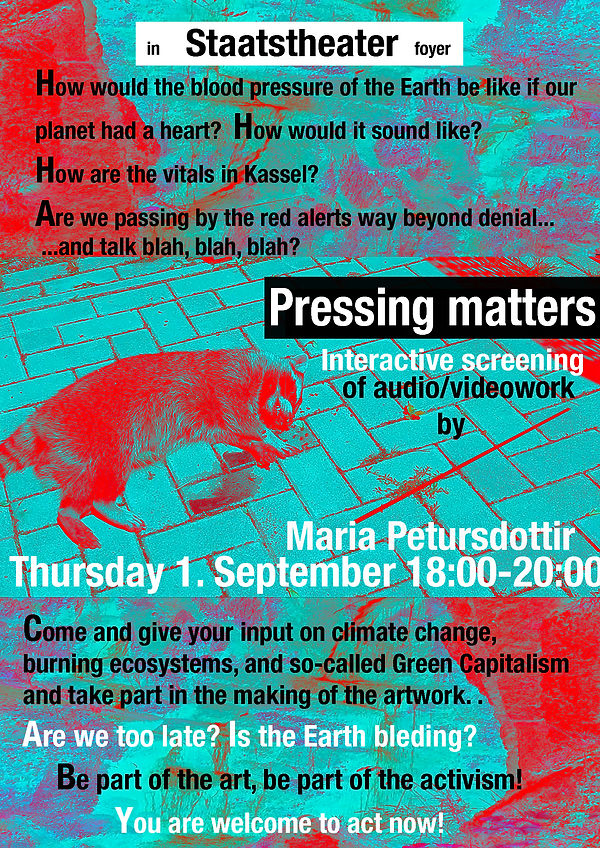

At work on the project at Kassel I worked according to a shift plan, but I also built the shift plan for 5 interns who came to work on it. It can be true to say that I’ve been all over in this work, but I’m titled as an assistant artist in the playbook of Staatstheater. Working hours were in shift form and was 70% employment rate for five months. Free time went to view art exhibitions, audio works, concerts and more in Kassel and Venice, but both Venice and Documenta exhibition in Kassel were running at this time. I also participated in several open performances at Documenta in Ruru House, which was the center of the exhibition managers.
Methods were e.g. Working with tools on construction workshops, mixers and projectors, micrafon mp3 players, video tools, recorders, audio recorders and computers as well as appliances for image processing and audio processing. Then there was post-processing to sort audio recordings and send to artists. I got a lot of experience out of this internship, both in terms of integrating projects and events, guiding people and working with different artists and other interns, theater staff and guests. There were a number of things that didn't go well in terms of the cooperation of the theater itself with performances and the art part, while the opera part was like an anointed machine. It needed a manager in the project so it often came into our share and Unnar Sesselja Ólafsdóttir (university student in MA studies of art analysts (actress and theater)) who was also in the internship with me to plan and arrange all kinds of things in cooperation with Anna Rún Tryggvadóttir and the exhibition managers who became two for a period because the first had a child. Neither Anna Rún or Þorleifur nor the exhibition leaders were a lot on the spot except right before and forward over the opening in mid June, around Þorleifur’s exhibition on the opera in mid-July and then in september when performances and events were held.
We interns had August to work our own project and events and held zoom meetings with exhibition directors and artists if needed. It was very interesting to have just finished a course in Event Management and then participate in great events like this one that actually touched everything I had worked with in my project in that preceding.
Myndir Documenta og Feneyjar
This was an invaluable time, also in the light of the stirs that were up in Kassel’s society because of all kinds of disputes that emerged at Documenta, but that exhibition was exceptionally political and came up issues such as anti-semetism and more. It was a lesson by itself but I also received a few artists from Iceland who came to visit our exhibition and Documenta. All in all, we received at least 50,000 people at our Staatstheater exhibition during these 5 months, and held about 50 individual events. You can view the TAH website here: https://www.templeofalternativehistories.com/ Mary Petersdottir